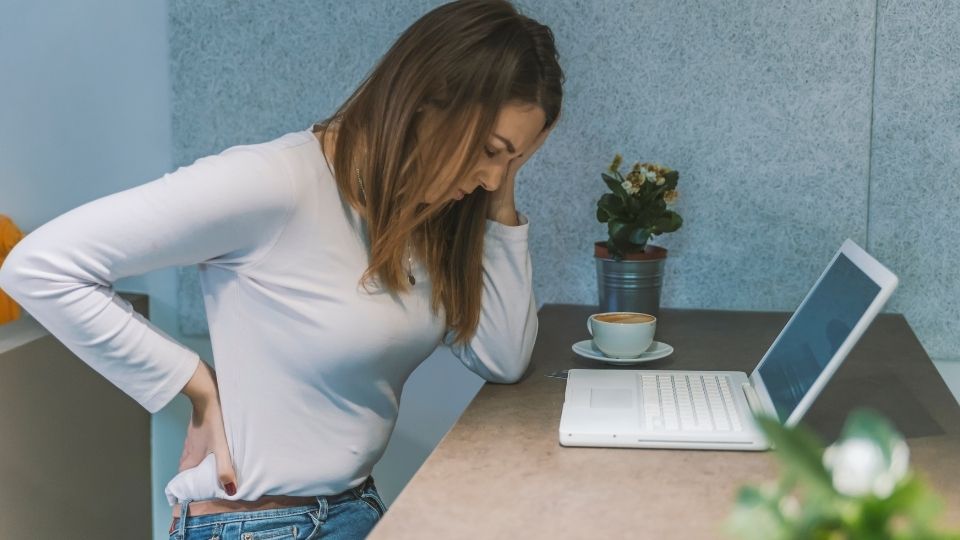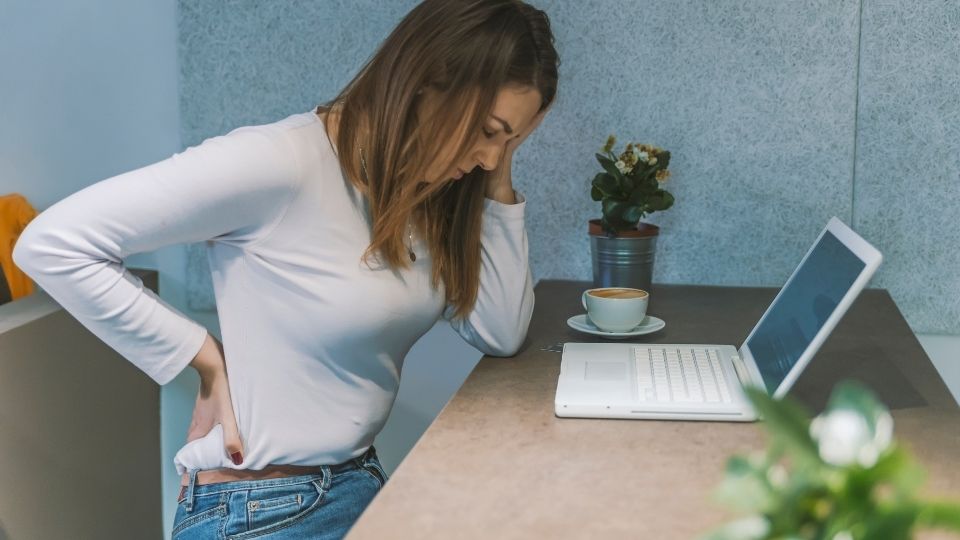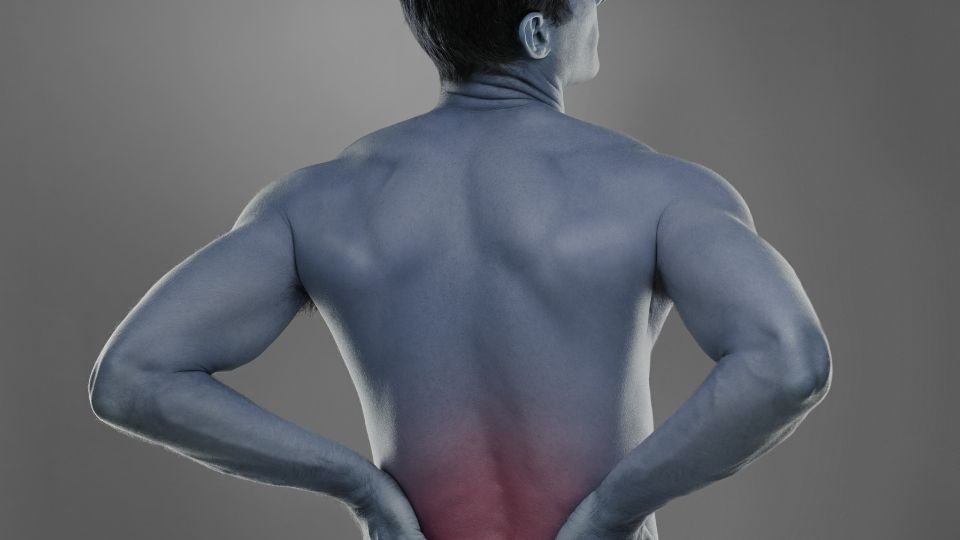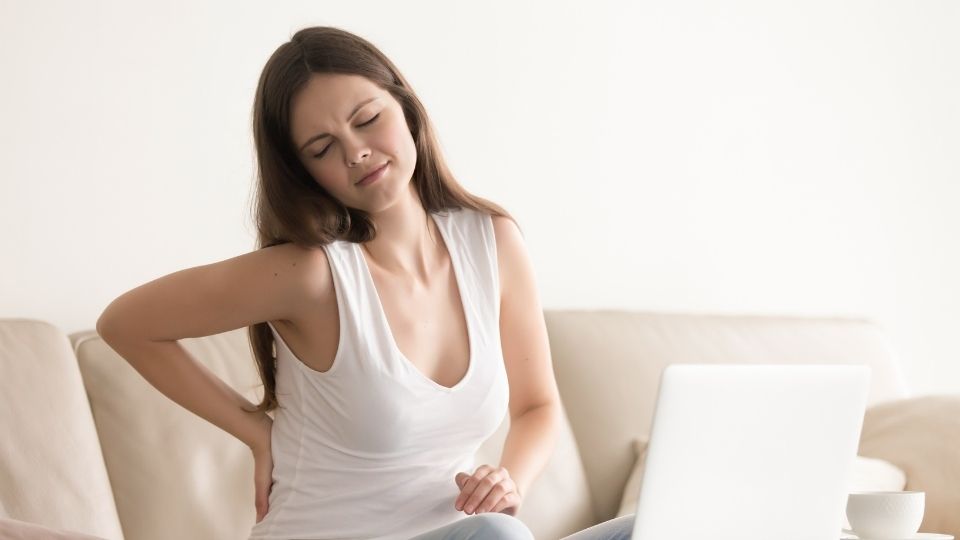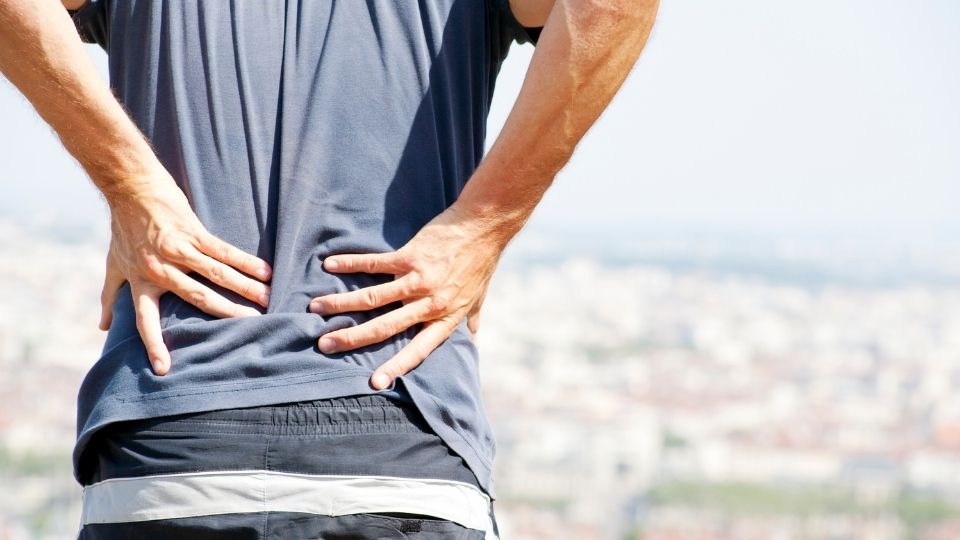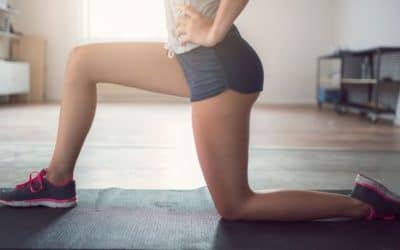Why Your Back Gets Stiff When You Sit
People who complain of back stiffness when sitting consult me regularly in my practice. If this is happening to you, you should consider your seat as the primary source of the problem. There are other factors to consider, such as why back stiffness occurs.
As a general rule, having poor posture makes your back stiff because you don’t move enough as you sit, so you end up slumping which strains your muscles. If prolonged without being corrected, a stiff back while sitting can develop into chronic lower-back problems.
Back stiffness with sitting is a common health problem that can be easily avoided with good posture habits. You should always focus on your posture to avoid back pain, which could lead to more serious symptoms such as sciatica or herniated discs in the spine. My experience as an ergonomic advisor, author, and chiropractor might help if you are suffering from back stiffness because I’ve collected some research-based tips for sitting!
All Day Comfort & Support
How to Get Rid of Back Stiffness
7 Effective Methods of Relieving Back Stiffness:
- Heat. Joint aches and spasms can be relieved with heat therapy, which enhances blood flow.
- Ice. Constricting blood vessels with ice is one way to reduce inflammation and numb pain.
- Avoid heavy lifting and activities involving twisting your back. Stay active with light exercise such as walking. It would be best if you aimed to move throughout the day. Whenever possible, take a walk every twenty minutes or so.
- Chiropractic care. A good chiropractor can address stiffness in your joints to better mobility.
- Massage. Spasms and contractions caused by muscular spasms may be reduced by massage therapy.
- Keep moving. Walking is one of the best things to get rid of your stiffness. Movement is medicine.
- The best posture for a stiff back is a moving posture. Make sure that you get up every 20 minutes.
Why You Are Stiff After Sitting for a While
Standing up in the morning, or sitting in a chair for too long, can also cause stiffness in your body. People who suffer from muscle stiffness are most likely to have sprains or strains.
What Causes Stiffness in Back
Usually, the most common cause of back stiffness is a lumbar strain. A lumbar strain occurs when soft tissues like ligaments and muscles that support the spine are injured. Muscle spasms may or may not be linked to a particular event, but the symptoms of lumbar muscle strain can be severe.
Why Your Back Pain Worse When Sitting
Most likely, your posture is incorrect, or you are sitting in the wrong chair or both. Sitting can cause low back pain, which gets worse if one sits for long periods. However, if you continue sitting the symptoms may return after you stand or walk.
Three Reasons for Stiffness in Back When Sitting
- Tight hip flexors. A bend in the hip is called flexion of the hip. The iliopsoas muscle carries out this action. In severe cases of iliopsoas stiffness, spinal instability may occur. Additionally, surrounding spinal tissues may get irritated and inflamed, generating outward pain.
- Sitting forward. While sitting with your spine arched forward, the following changes may occur in your spine to cause stiffness:
-
- Increased pressure on your discs
- You may find that your upper and lower back muscles become weaker.
- The front muscles in your body (the anterior chain) become shorter while your back muscles (the posterior chain) elongate, thus creating an imbalance.
- A sedentary lifestyle can aggravate these changes, resulting in spinal stiffness within one hour of sitting.
Black Friday: 35% Off Today
Typical Delivery 1-3 Days
Why Am I Getting Lower Back Pain When Sitting up From Lying Down?
In addition to axial back pain, weak spinal muscles or ligaments can cause the lumbar spine to hurt. It may indicate a herniated disc if your back pain becomes worse when sitting and often improves after standing.
How Do You Know if Back Pain Is Muscle or Disc?
Spinal sprains, strains, and disc herniation hurt both with bending forward and once you return from it to an upright position. That said, it is always advisable to get an appropriate diagnosis.
Why Does My Back Feel Stiff When I Wake Up?
It is common for the back to feel stiff in the morning, particularly when you get up from a lying down position. Back stiffness in the morning is usually caused by:
- Wrong mattress. As a back pain specialist, I have worked with patients for years looking for high-quality latex natural mattresses that are comfortable, supportive, resilient, sleeping cool, plant-based, non-toxic and biodegradable.
- Stiffness from decreased blood flow. You may be suffering from pressure points caused by sleeping on the incorrect mattress, or you may have an underlying medical condition. It is always a good idea to have any vascular issues investigated by your doctor.
Is It Better To Sit or Stand With a Stiff Lower Back?
A standing desk may help improve your posture and take the stress off your neck and lower back; however, it is unlikely to help you correct more severe issues, such as scoliosis or a bulging disc.
Black Friday: 35% Off Today
Typical Delivery 1-3 Days
These are my observations on standing desks:
- Many of my patients have told me they notice an increase in productivity when using a standing desk.
- Standing desks are not going to replace chairs. Standing desks are a trend right now, and trends come and go.
- But just like sitting, standing can make you sedentary too.
- My practice has seen a rise in neck and shoulder problems in patients who use standing desks.
- Our research suggests that a lack of movement and the lack of armrests could be the two critical factors for the rise of neck and shoulder pain in people using standing desks.
- My advice on standing desks: You should mix sitting, standing, and moving throughout the day.
Should I Exercise With a Stiff Lower Back?
You can recuperate from back pain and stiffness through light workouts, to make tight areas more flexible. Physical activity can reduce self-reported pain symptoms, not just those caused by back pain, but also those caused by arthritis.
However, saying this, you always want to make sure that you are exercising in alignment. Proper alignment can be achieved by becoming an expert at sitting, standing, and sleeping.
- Sitting- make sure your hips are always above your knees.
- Standing- keep your knees unlocked always!
- Sleeping- sleep as though standing tall with knees slightly bent with a second pillow below (for back sleepers) or between (side sleepers) your knees.
Conclusions
My clients spend considerable amounts of time sitting, thereby avoiding potential dangers of back stiffness issues from sitting with this advice that I shared with you today. These changes to your sitting environment should have long-lasting benefits.
Numerous other factors may cause lower back pain, as well. Therefore, it is always prudent to receive a proper diagnosis to eliminate any potential pathologies.
You should also get your workstation right if you do not want to end up with a stiff back. Inactive and complacent movements would cause this, so try not to overdo your work.
Sources
Sitting Posture of Subjects With Postural Backache, Journal of Manipulative and Physiological Therapeutics, Volume 29, Issue 3, 2006, Pages 213-218,
Roffey, D.M., Wai, E.K., Bishop, P., Kwon, B.K. and Dagenais, S., 2010. Causal assessment of occupational sitting and low back pain: results of a systematic review. The Spine Journal, 10(3), pp.252-261.
Hartvigsen, Jan, Charlotte Leboeuf-Yde, Svend Lings, and Elisabeth H. Corder. “Is sitting-while-at-work associated with low back pain? A systematic, critical literature review.” Scandinavian journal of public health 28, no. 3 (2000): 230-239.
Williams, M.M., Hawley, J.A., McKENZIE, R.A. and van WIJMEN, P.M., 1991. A comparison of the effects of two sitting postures on back and refack pain erred pain. Spine, 16(10), pp.1185-1191.

